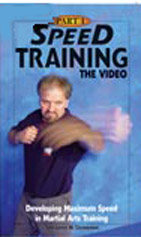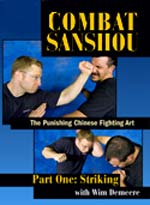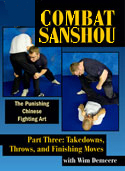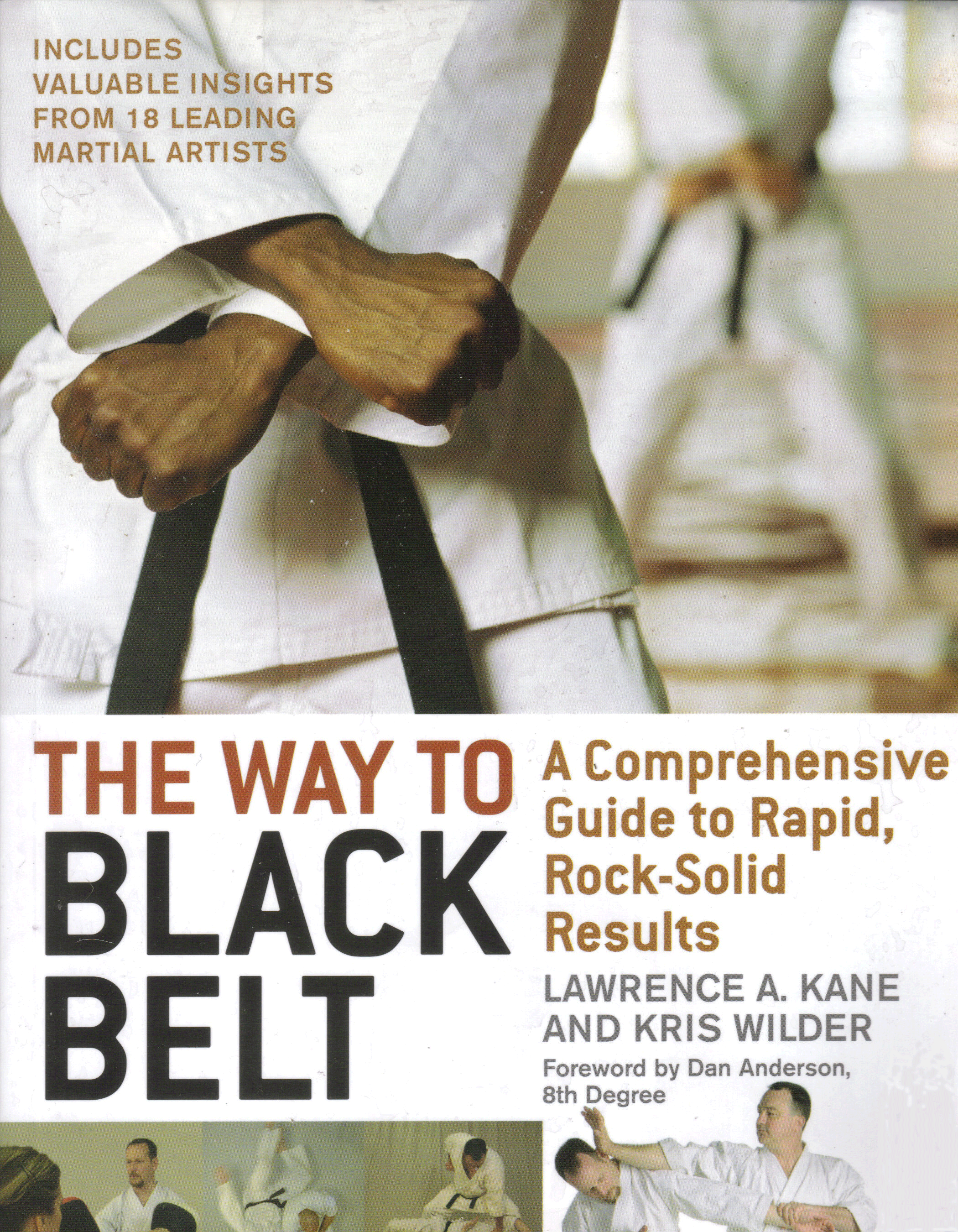Marc MacYoung?
Dianna Gordon MacYoung?
Animal E-list
Crime Avoidance Lectures
Crime Blog
Colorado Classes
Contact Us
FAQs
Hosting A Seminar
Crime Prevention
Expert Witness
Knife Defense
Law Enforcement
Martial Arts
Military
Movie Consulting
Women's Self-Defense
Links
Our Linking Policy
On-line Store
Train with MacYoung
Testimonials
Terms of Use
Topics
of Interest
But the first business of any
theory is to clear up
conceptions and ideas which have been jumbled together,
and -- we may say -- entangled and confused; and only when
a right understanding has been established as to names
and conceptions can we hope to progress with clearness
and facility, and be certain that the author and reader
will always see things from the same point of view.
Carl von Clausewitz
On War
On this page:
Basics Defined |
Fundamental Defined |
One Without The Other |
Joining the Two Concepts |
Separating the Two
When a system fails to perform as promised, in the shuffle of trying to place blame on why it failed, sooner or later the student's failure to have 'mastered the basics' will come up. In the meantime, the student who feels that he did do the basics, grows resentful. And rightly so.
Because quite often, the system's basics failed him.
But to understand what we are talking about, let's first look and see if this sounds familiar. When you first enter into a training system, you are taught the basics. When teaching a new student, you teach them the basics. How to move, how to punch, how to kick, etc., etc. Basic moves of the system. When senior instructors rail about the poor performance of the students they often cite the student's weak grasp of the basics. When those students are sent back to practice the basics -- like a snarky teenager sent back to redo a poor job -- much of the time is spent in resentment about having to do such remedial drills and ineffective techniques. Because 'everyone knows it is the advanced techniques that work, not the basics.' In the mean time, the grand poobah of the system comes forward and says that the advanced moves are just the basics understood on a different level.
My, my, my look at all those uses of the word basics. The problem is, that while everyone is using the word 'basics,' it doesn't mean the same thing to everyone.
It is assumption that everyone means the same thing when they use the term that is quite often the root of all kinds of problems. One of the biggest problems is that people are so busy going on about the basics that they don't realize that the fundamentals -- those things that actually make a move work -- are slipping through the cracks.
Basics Defined
The truth is the terms basic and fundamental are in many ways almost synonymous
in the dictionary. However, there are very, very important differences.
Differences, not only in the definitions, but in what people mean when they use the word basics. The resulting confusion and a demonstrable lack of effectiveness in the techniques are what prompted us to start using the terms basic and fundamental. Instead of lumping them together as many people do, we use them to identify two very different things.
If you go to most dictionaries you will see "basic" defined as these two dictionaries do:
Random House Unabridged
1) of, pertaining to, or forming a base; fundamental.
2) Chem a pertaining to, of the nature of, or containing
a base...Mil. a primary: basic training. etc., etc.,
Webster's Collegiate
Dictionary
1) of relating to, or forming the base or essence;
fundamental. 2) constituting or serving as the basis or
starting point etc., etc.,
Funny thing is, in the definition of basic, a word that keeps on coming up is 'fundamental.' This leads many people to assume that a fundamental and a basic are one in the same.
Not true.
The reason this is not
true is the other recurring 'theme ' that continually
crops up in the definition of basic. This is the idea
that a basic is a starting point in teaching. Go
back and reread that last line ... it's that important.
Look at the Random House definition. It's right there in
the word primary. If we look up the definition of
primary we find -- in the later definitions -- not
ultimate importance as you might think, but:
3) first in time, earliest primitive 4) of,
pertaining to or characteristic of primary school:
primary grades 5) constituting or belonging to the first
stage in any process. 6) of the nature of the ultimate
or simpler constituents of which something complex is
made up.
(Random House Unabridged)
While a basic can very much be a component part, it is generally thought of as an introduction to larger issues.
A basic is, by definition as much a kindergarten introduction as it is a fundamental or basis. It doesn't matter what you mean when you use the word, this is what most people think basic means. Putting that in plain English, while the master may think of basics in terms of 'a foundation for all great literature,' the student is seeing them in terms of pink bunnies holding letters of the alphabet.
When you realize this, you not only see how different people can use the exact same word and mean totally different things, but you can also see how people get insulted about the basics. For example, "Go back and focus on the basics." Who hasn't heard this or something like it? To the master that means "plumb the depths of your art". That's because he's thinking in terms of fundamentals. The student, on the other hand, has pretty much gathered all that there is to get from 'the basics.' Therefore his confidence in you is eroding when you tell him the 'secrets' of success are in fluffy bunnies holding letters.
Fundamentals
Defined
Remember how the word fundamental kept cropping up in the definition of basic?
Random House Unabridged says of fundamentals:
1) Serving as or being an essential part of, a foundation or basis; basic;
underlying; fundamental principles, the fundamental structure. 2) of pertaining
to or affecting the foundation or basis; a fundamental revision 3) being an
original or primary source; a fundamental idea....5) a basic principle, rule law
or the like which serves as the groundwork of a system; essential part; to
master the fundamentals of a trade.
In short, a fundamental is what something arises from. It is a defining premise/principle that a system is built upon. It is no more a 'simplified teaching tool' than the foundation of your home is an introduction to your house. And yes, you can spend a lifetime discovering all the different ways fundamentals manifest.
In the case of the martial arts/self-defense/defensive tactics, fundamentals are what makes it work. That's because the fundamentals of effective movement are physics, physiology, proper body movement, proper structural alignment and the understanding HOW to apply those. These, not the technique, are what is affecting your opponent.
When done 'correctly,' the technique is a way to effectively manifest these fundamentals. However, if these fundamentals are not included in the technique, then the 'technique will fail.' (0r at least that is the common perception).
Here is where things get complicated ... it is possible to teach the basics without teaching the fundamentals.
One Without the Other
While it might win us the NO DUH award of the month, we have to say it. There is
a big, big difference between just sticking your hand out and wagging it around
while calling it a punch, and being able to move in such a way to deliver power.
For clarity's sake, let's give an example. A new student walks in through the door of a McDojo and he or she is taught a 'basic.' Let us say the basic taught is a punch. After some quick, down and dirty explanation on how to hold his or her hand and to wiggle the hips the student is left alone. The student practices this move diligently until, after gaining a degree of proficiency at performing this move how he or she thinks it works, the student is given another basic to learn. Let's say, this one is a kick.
The problem is that while a punch may be basic to learning the system, the fundamentals of punching were never addressed.
Assuming that you are an advanced student or instructor ... can you answer these questions about the fundamentals of a punch? What makes a punch effective? What is the purpose of a punch? What are the critical components that must be present for a punch effective? What is the strategic application for punching? What is the optimum range of this particular punch? What gives that punch power? What is the structural position of that particular punch for it to effectively deliver force? These are fundamentals of punching. Fundamentals that, if they are not communicated, reduces this so-called punch to just waving your arm around. It can be all kinds of things, but it is not an effective punch.
Want to know the difference between a basic and a fundamental? What we just mentioned isn't advanced 'black belt training.' In fact, the groundwork for ingraining these elements needs to be present from the very start. You don't need to explain it yet, but the component parts that all of those things will be based on need to be there from the beginning. If they are not, then they will not be there in the advanced. The foundation, must be there from the beginning.
Unfortunately, this foundation (the fundamentals) are often lacking from what is being presented as 'the basics.' Not to put too sharp of a point on it, but what is often presented as the basics really is fluffy pink bunnies. Bunnies without even the benefit of holding letters. And that is not only why so many students get upset when you tell them to go back to the basics, but why they have just cause for getting upset. If the basics have become separated from the fundamentals then there are no depths to be plumbed. That's not a punch, that's sticking your hand out in the air, wagging it around and calling it a punch.
Is it any wonder that the student doesn't understand the emphasis on basics? Because all he was taught was the kindergarten introduction of a basic, not the underlying fundamentals that make the punch effective. And in fact, without these fundamentals, his punch won't be effective. So he's right, why should he return to the basics?
Another unpleasant reality is that it is possible to drop certain aspects from a technique. Often this is because moves had to be toned down for sport application or, as in the case of many commercial schools, to encourage rapid belt advancement among the customer base. Another common problem however, is that the instructor unwittingly stop articulating to his students a component of the technique. A component that he does so automatically and easily that he is no longer consciously aware of it. Without that component that technique will not work without patching -- and even then, only for certain people. When someone who was incompletely taught becomes a teacher, he or she cannot pass on what was never learned. This is why we maintain it is possible to teach the basics and fail to teach the fundamentals! Yes, you have the basics ... but you might not have the fundamentals that make those basics work.
Blending the Two Concepts
While many instructors might consider basics and fundamentals to be the same, we
have just shown that they aren't. There are subtle, but important, differences
that:
a) get lost in the buzz words used in the
dojo
b) while it may lost in the dojo, the
difference isn't lost to the new,
non-indoctrinated students
c) indicate a very good chance that critical elements
are being lost in what
you
are teaching
Furthermore, because many students think that basics are kindergarten concepts that they already know, they fail to practice. Forget correctly, we're talking practicing them at all -- especially after a bright new shiny toy is given to them, like a new higher belt kata. Hey, learning a kata is a whole lot more fun than any ol' stupid basics. This especially in light of the long boring hours necessary to ingrain the neurological pathways necessary to perform the fundamentals effectively under adrenalin (wrongly called 'muscle memory')
Unfortunately, because the fundamentals were never taught to or understood by the student, what you have is a collection of empty forms. That kata is just as weak and useless as the basics. The student does not have the fundamentals that would generate an effective punch, kata or no. What they are doing is, in effect, like a car without an engine. You have the form, but not what makes it go. In systems that collect katas, what you have is a lot of cars with no engines.
The simple fact is, without the fundamentals of effective movement people begin to make up their own way of moving. This is why you can walk into many commercialized school and watch a group of people doing the same kata, but, if you look closely, at how each individual is moving, they are wildly different(1). In fact, often the student has made up his or her way of moving during the technique. So what you have is a lot of people doing a technique, but only one or two of them who could begin to deliver power with it.
What is even worse in these situations is that the flawed and weakened way of doing the technique has often been accepted as the 'right' way to move. This is especially true in schools where the instructor either changed something or failed to learn it him/herself and has come up with a patch to make the move semi-functional. What is taught as the 'right way' to do the technique is the flawed and weakened version.
This is why so much martial art/SD/DT training fails in live-fire application, not because of the adrenalin rush, but because what they are trying to do lacks the fundamentals that would make it work.
As such -- especially in a crisis -- a student often fails to make sure those elements are present. Or adds something else that changes the move entirely. In the end, instead of actually punching, what that person is doing is just sticking his hand out there and wagging it around.
Unfortunately, if you do not start ingraining the fundamentals of effective punching early, this is the common result. And it is these flawed versions, not the technique that fails under adrenal stress. Return to top of page
Separating the Two
How do you tell the fundamentals of a basic? Start by asking: What is the
purpose of this move?
This is an incredibly
important thing to do ... and yet, it is appalling to see
how many people either
a) don't do this or
b) try to stack too much onto a move ... and by doing so,
lose the intent of
the move itself in all kinds of other
rigmarole.
For example: What is the purpose of a block? Think about it for a second, what is a block for?
It's to keep you from getting hit.
Plain and simple. Nothing more, nothing less. If your block is not succeeding in keeping you from getting hit something is drastically wrong. Usually fundamentals have been lost. Critical components are missing. And yet, how many people are taught how to block as a basic?
Putting it bluntly, if the basic isn't working, you weren't taught fundamentals:
You weren't taught those things that need to be there to make it work. If the move doesn't have the fundamentals to keep you from getting hit, you're going to get smacked in the head. Not because the other guy is so good or you are so bad, but because the block doesn't work!
Before we proceed, we also need to address another common issue. While the section on Martial Arts Culture is very distinct and covers separate issues, there is something that needs to be addressed here. That is the habit of McDojo instructors to obscure the fact the block he taught you fails to meet the basic criteria of "don't get hit." This failure to perform is often obscured by claiming that blocks are hits or limb destructions. And obviously, you just didn't hit hard enough. Unfortunately, this is an attempt to compensate for a failure. Yes you will always get hit in this biz, but a block that has all the fundamental components really reduces the number of times that happens. But since they don't know it, they can't teach it. Telling students that a block is a hit is an attempt to accelerate the block to make up for the lack of effective fundamentals.
In attempting to make a block a hit, you change the physics of the move, tend to "dig in" to your position, encourage winding up, as well as change the final position of the arm. This is all in the name of gaining more speed to "hit" with your block. The cost of these extra actions, however, is that you actually increase your chances of getting hit, if not from the first strike, then from the next one.
There are two problems with turning a block
into a hit to compensate for a lack of fundamentals:
One is being the wrong position, staying where you are and
winding up for
more speed ends up taking longer than an effective block.
This increases
the chances of the first blow getting through.
Two, is that, in attempting to hit hard enough to break an
arm, you end up
rocketing way past any place where you can effectively
recover and get
back in position in time to block the next incoming
blow.
So if the basic goal of a block is not to get hit, what fundamentals must you make sure to include so you don't get hit:
In case you hadn't noticed, this so-called basic block has just taken on incredible depths. As such, a student can return to it again and again and again. And every time, focus on developing a different fundamental that will greatly assist in achieving the goal of the block -- namely, don't get hit.
This is teaching both the basics and the fundamentals. And ingraining these fundamentals so they are present in every move is not a skill that is gained overnight.
Now if the student believes that a basic is a kindergarten move and that the real sexy stuff starts happening in the more advanced levels, she will never spend the time to study the fundamentals. Unfortunately, because nobody ever bothered to explain the importance of fundamentals to the student, all those flashy Power Ranger moves are going to fail when the rubber meets the road.
Whereas, if every time she returns to this basic move and the task at hand is to ingrain a different fundamental, refinement of that basic movement can go on for months, if not years. What's even better is that it is not wasted time. The student is advancing and correcting herself by refining these fundamentals. Fundamentals that have many, many other applications in the system, as well as within that basic.

1) When we say this we are often challenged by McDojo instructors with "Of course they are different, everyone has a different body type!" We'll be the first to admit there is going to be differences in movement because of different body types and experience levels. That isn't what we are talking about. What we are referring is more like while everyone ends up in the same position, how they get there is entirely different. Things like timing, body mechanics, body movement, the pathway they take and thousands of other little tweaks and twists are different. When you really start watching what you will see looks not unlike a group of people who dance up to a line and stop in a certain pose, except this guy is dancing the macarena, she's doing the tango, he's doing the fox trot and that guy over in the corner is doing the funky chicken. Then they go dancing off to the next pose. We're not talking about the end poses, we're talking about the radical differences in what is happening in between the poses. Return to Text


Secrets of Effective Offense
Learn More >
Order Now!

Fighting Arts of
Indonesia
Learn More >
Order Now!

Speed Training
Learn More >
Order Now!

Speed Training: The
DVD
Learn More >
Order Now!

Reflex Action
Learn More >
Order Now!

Pukulan Pentjak Silat
Learn More >
Order Now!

Filipino Kuntao
Learn More >
Order Now!

Experience- & Reality-Based
Self-Defense
Learn More >
Order Now!

Martial Arts America
Learn More >
Order Now!

Warriors: On Living with
Courage, Discipline and Honor
Learn More >
Order Now!

Indonesian Fighting
Fundamentals
Learn More>
Order Now!

Ground Combatives for Police
Learn More >
Order Now!

Fighting Dirty
Learn More >
Order Now!

Meditations on Violence
Learn More >
Order Now!

Martial Arts Instruction
Learn More >
Order Now!

Combat Sanshou: Striking
Learn More >
Order Now!

Fighter's Guide to Heavy Bag
Training (Book)
Learn More >
Order Now!

Combat Sanshou: Kicking
Learn More >
Order Now!

Fighter's Guide to Heavy Bag
Training (DVD)
Learn More >
Order Now!

Combat Sanshou:
Takedowns/Throws
Learn More >
Order Now!

Fighting Footwork of
Kuntao/Silat Volume 1
Learn More >
Order Now!

Escape Combatives
Special Bonus Feature
ESCAPE DRIVING
Learn More >
Order Now!

The Way of Kata
Learn More >
Order Now!

Fighting Footwork of
Kuntao/Silat Volume 2
Learn More >
Order Now!

The Deadliest Men
Learn More >
Order Now!

Real Fighting
Learn More >
Order Now!

Fighting Footwork of
Kuntao/Silat Volume 3
Learn More >
Order Now!

Way To Black Belt
Learn More >
Order Now!

Fighting Footwork of
Kuntao/Silat Volume 4
Learn More >
Order Now!
| About navigating this site | Animal List | Bibliography | Bullies | Burglary while on vacation | Classes in Colorado | Car Jacking | Children and Martial Arts | Child Safety | Criminal Mindset | Cults in MA/SD | De-Escalation | E-mail Dianna | E-mail Marc| FAQs | Have MacYoung speak about crime avoidance | Home Page | Home Defense | Hosting a Seminar | Fear | Five Stages of Crime | Knife Fighting | Legal Issues | LEO/Correctional Officer/EMS | Linking policy | Links | Martial Arts | Photo Gallery | Property Crime | Psychology | Rape | Robbery | Safe Dating | Self-Defense Training | Selling your books/DVDs on NNSD | Seminar Schedule | Stalking/Domestic Violence | Street Fighting | Terms of Use | Testimonials | Train with Marc MacYoung | Who is Dianna Gordon MacYoung? | Who is Marc "Animal" MacYoung? | Victimhood | Workplace Problems | Zero Tolerance | ||
| ? 1998-2008 No Nonsense Self-Defense, LLC. All rights reserved. |